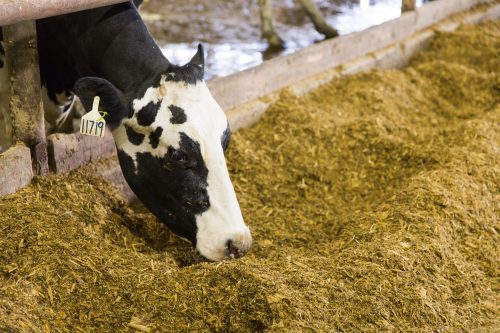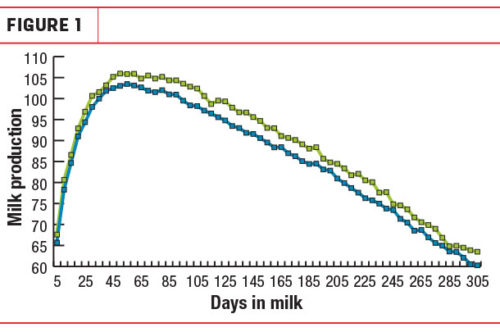5 Areas of Focus to Maximize Peak Production
Posted: November 7, 2018 | Written By: Tim Kinches, Form-A-Feed Technical Services Specialist

The lactation curve of milk production on some farms can be complicated. The question of how we get more production from cows comes up in many conversations between nutritionists and their producer customers. A “normal” lactation curve can be broken down to some simple basic principles.
One of those basic principles is: The higher the curve reaches, the more pounds of milk you will get over the course of the lactation period. A simple rule of thumb I have always used is: For each additional pound of peak milk, 300 pounds of additional milk will be produced from that cow over the course of the lactation.
1. Increase dry matter intake (DMI) in far-off dry cows. It sounds odd to talk about peak-lactation milk and then start with far-off dry cows. The fact is: An increase in far-off dry cow DMI will increase DMI in pre-fresh cows, which will increase fresh cow DMI and thus increase DMI in high cows. We need to get these cows to eat enough dry matter to get the pounds of nutrients into them to maximize peak milk production.
2. Limit metabolic issues. It may seem obvious, but metabolic issues need to be addressed and minimized with constant monitoring. All metabolic issues will lead to DMI reduction and decrease the peak of high cows.
3. Move fresh cows at an appropriate time. This is one of the first areas I address on dairies when I start to consult with them. When is the correct time to move fresh cows? If they are moved too early, they may not be aggressive enough or feel good enough to compete with other cows.
If they are moved too late, the beginning ramp-up in milk production can be limited, and the peak in their lactation will not reach its full potential. I use week 4 milk as a metric to monitor this “sweet spot” of when to move fresh cows. For most herds, it is between 10 and 20 days in milk.
I find many dairies moving fresh cows when they are at 20 to 35 days in milk; at this point, you will see a huge jump in milk production after the cows are moved out of the fresh pen. The problem with this management decision to keep cows on a fresh ration longer is: The fresh ration is not concentrated enough to get all the nutrition into the cows to allow maximum milk production during this large ramp- up time. Peaks in milk production will be limited.
4. Improve cow comfort in fresh and high-cow pens. Improving cow comfort will always result in increased milk production. Whether this is limiting overcrowding or designing better stalls, cow comfort needs to be addressed and re-evaluated constantly. If you have sand stalls, are all the stalls usable? Do some have mounds of sand that limit usage? If you have mattress or rubber mat stalls, is there enough bedding? Is the neck rail adjusted to the proper height and position?
5. Focus on improving digestibility of nutrients in high-cow diets. At some point, we cannot get cows to eat any more pounds of intake or it is not efficient for cost of production to get cows to eat more. If this is the case, then making the ration more digestible can be an option.
Using different hybrids of forages like low-lignin alfalfa/corn silages or high-digestible starch and fiber corn silages is a great way to increase digestibility of key nutrients in a ration. Removing some forage and replacing it with high-density, digestibility protein and carbohydrate byproducts can be a good strategy.
